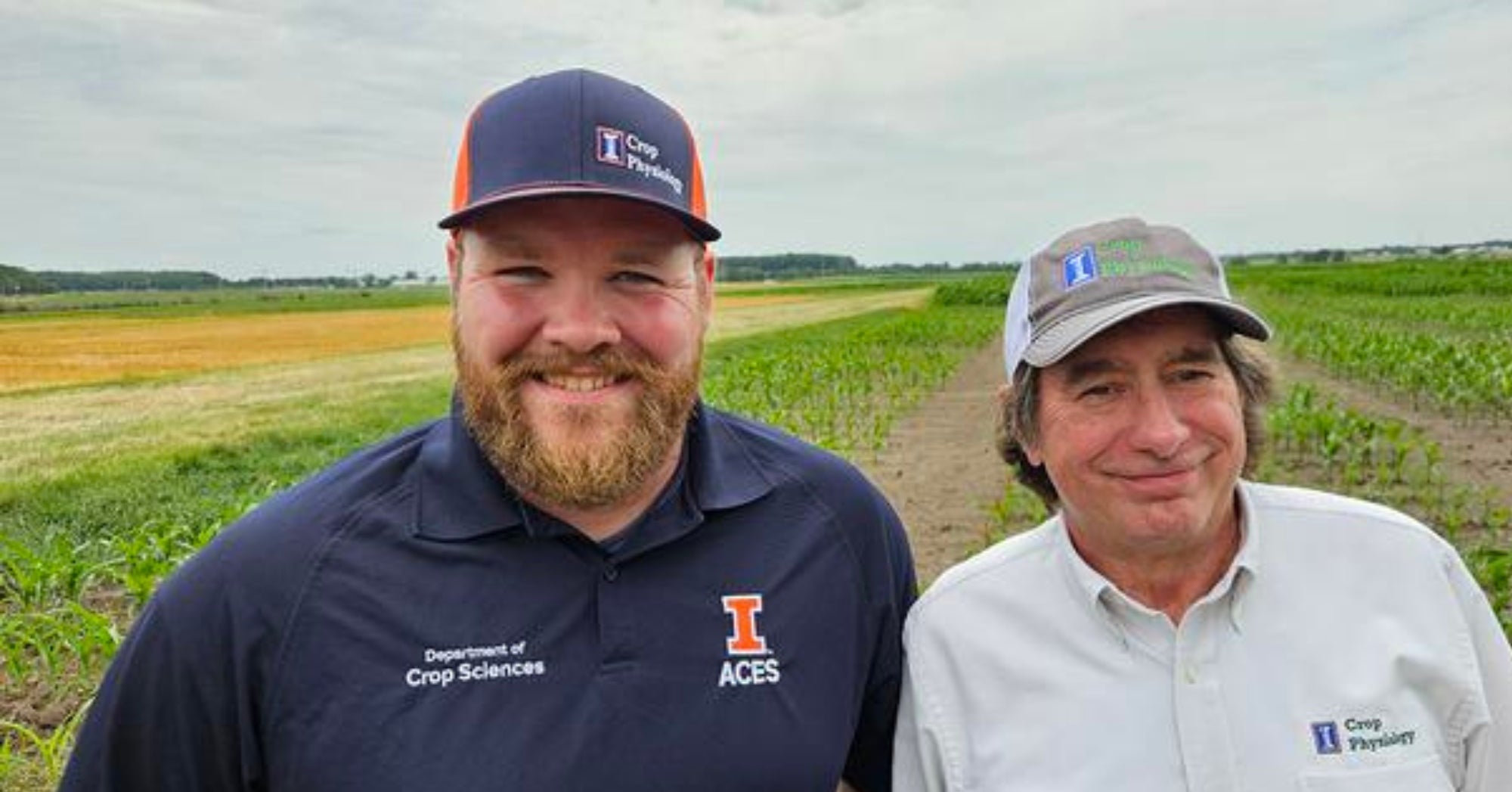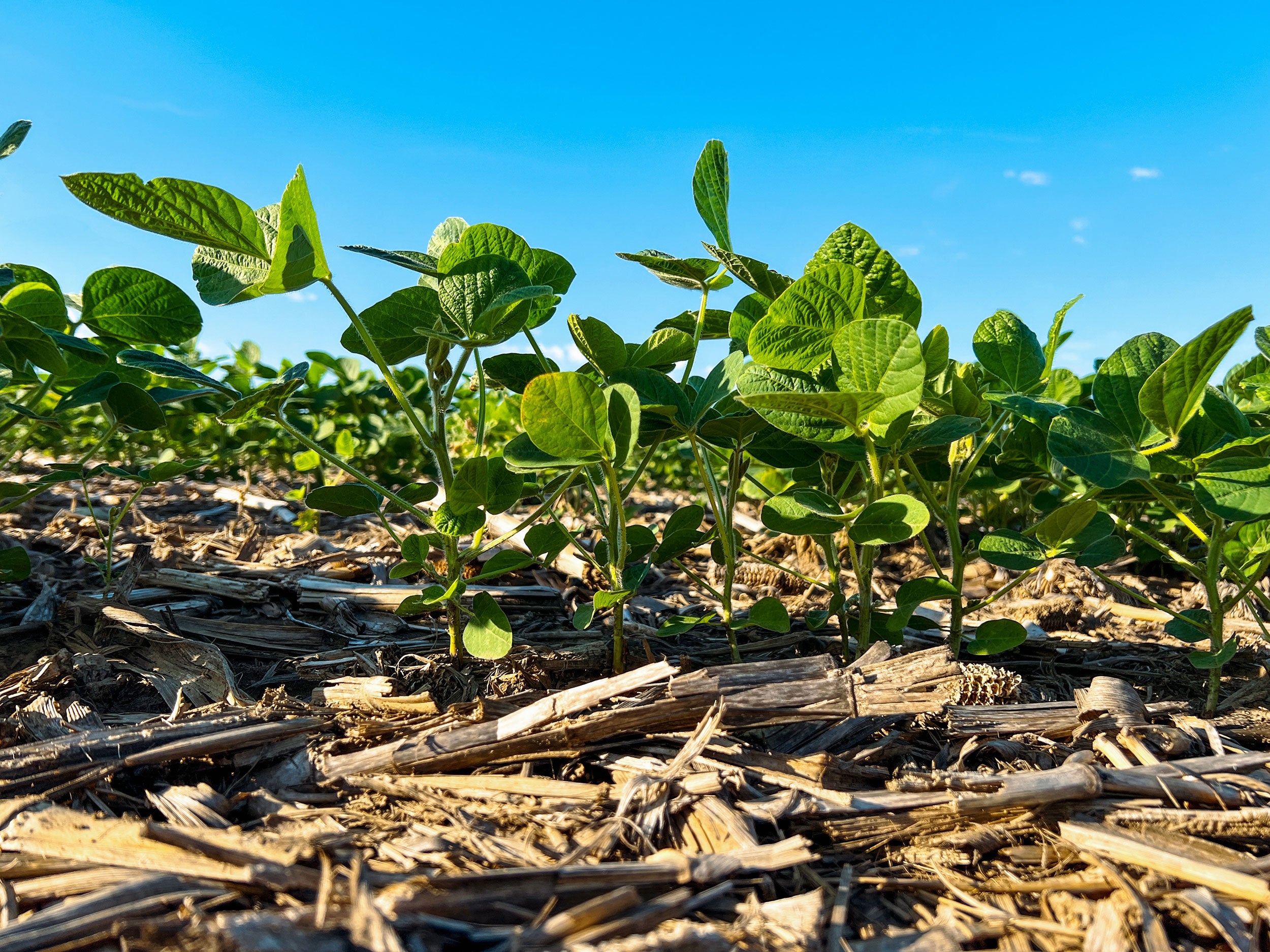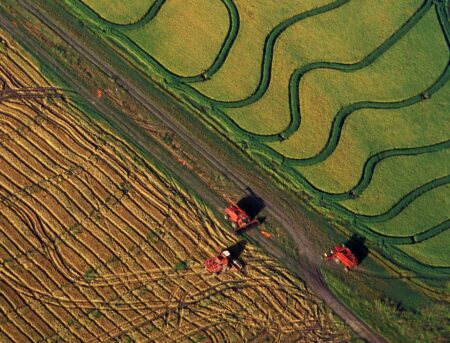Every time Fred Below and Connor Sible meet with Illinois farmers, they get the same question. “What’s the story with these biologicals? Do they work?”
The University of Illinois Urbana-Champaign crop scientists and Illinois Extension specialists are happy to share what they know about the natural growth stimulants, informed by dozens of trials and published research. But with new products constantly being added to the market — and a muddled regulatory landscape — it’s not always clear what farmers are even asking.
“We do a lot of extension talks, and we started to notice a disconnect. Farmers and companies call these products biologicals, but the scientific literature and regulatory bodies call them biostimulants,” said Below, professor in the Department of Crop Sciences, part of the College of Agricultural, Consumer and Environmental Sciences at Illinois. “When we started looking into it, we realized the terminology is not only confusing, these very different products are all regulated the same, if they’re regulated at all.”

The realization prompted Sible, Below, and colleague Juliann Seebauer to embark on a deep dive into the world of biologicals and biostimulants, publishing their commentary in Agricultural and Environmental Letters.
First, just what are these products? In the most basic sense, they are live microbial inoculants and non-living, naturally derived chemicals or extracts applied to soil, seeds, and plants to improve growth in some way. That can be through enhancing fertilizer efficacy, reducing crop stress, improving soil health, or other mechanisms.
“The original biological was soybean inoculum. That’s been around for decades, if not a century. But then the humic and fulvic acids [from decomposing organic matter or mineral deposits], hydrolysates [from plant and animal byproducts], and alginates [from seaweeds] came along, and were mostly applied in specialty crops,” said Sible, research assistant professor in crop sciences and Illinois Extension specialist. “In those systems, anything you can do to improve the quality of your crop — the difference between a good juicy tomato and a small, dry one, for example — goes a long way.”
Once these products gained a foothold in specialty crops, the industry started moving into row crops, such as corn and soybean. That spurred an explosion in the marketplace, with hundreds of products containing different active ingredients and promising various benefits.
“Very often, marketing exceeds the actual research. Clearly, that’s the case here,” Below said. “We think it’s made more difficult by a lack of consistent terminology, and, in some cases, not necessarily the right regulation for what the product is. A lot of these are living bacteria, and they’re currently regulated at the state level as fertilizers. Largely, there’s no regulatory process for them at all.”
As part of the university’s land grant mission, Below and Sible are tasked with providing unbiased research-based solutions to the public and policymakers. By diving deep into these products, they are attempting to clarify for farmers what’s out there and make it simpler for policymakers to apply logical regulations.
Although it’s possible to categorize the products into more than a dozen buckets based on their active ingredients, the researchers are calling for more simplicity.
“The reality is, the market has gotten so big, you can’t put them in one bin anymore,” Sible said. “Our ultimate customer is the farmer. We need to talk about these products in the same language that farmers are thinking about them. They would largely associate ‘biologicals’ with the microbials and ‘biostimulants’ with non-living products. So that’s our recommendation for clarifying the terminology.”


This distinction matters if the industry is to be properly regulated, the researchers say. Currently, only live microbial inoculants are defined in the U.S. Federal Insecticide, Fungicide, and Rodenticide Act. By qualifying as plant inoculants, these products are exempt from FIFRA regulations, and there is no established policy to confirm that the organisms listed on the label are alive and present in the listed concentrations.
“Labeling is processed at the state level,” Sible explained. “While state-level registration requires a label guarantee and expiration dates, there are currently no established third-party testing programs to enforce company claims. Furthermore, as each state has a unique process, the same product may be listed as a soil amendment in one state and as a plant inoculant in another.”
The researchers argue that federal regulations, aimed separately at biologicals and biostimulants, could also alleviate safety concerns specific to both product categories. Grouping both products under the same regulatory framework just doesn’t make sense in terms of risk, Sible says.
“Although all products, living or non-living, have their associated safety risks, the ability of microorganisms to mutate as they adapt to various environments, or if they are closely related to known pathogenic strains, warrants additional regulatory considerations compared to the non-living inputs that they are currently grouped with,” he added.
Although they are calling for more nuanced terminology and regulations, the researchers don’t want to make it harder for industry to operate or for farmers to benefit from these products. They know, from their own trials and from farmers they meet during field days, that biologicals and biostimulants can absolutely move the needle on yield and quality at the farm gate. That’s all the more reason, they say, to define a common language and regulatory landscape around them.
“For this market and how fast it’s growing, we need all of the perspectives — academics, industry, and farmers — to come together on these products,” Below said.


:max_bytes(150000):strip_icc()/IMG_7936-c12c642ad0064146a4aecfc1a60502a3.jpeg)
:max_bytes(150000):strip_icc()/HTTJohnDeeretractorwithtillage_preview-6e8cfa3643f043efb29085bd78d76c98.jpg)
:max_bytes(150000):strip_icc()/Canadian20flag48553671412_aeb0538794_c-0bfa123de2b54e30ab4fadecae382d4a.jpg)





:max_bytes(150000):strip_icc()/WheatField-CloseUp-2000-bc79406da4004a2d94bcb2c32153cc3a.jpg)